When will we be able to see the planets at their best during this upcoming year of 2025? This guide will tell you.
It will also provide information as to when a particular solar system planet might be passing near to another, or a bright star, as well as the constellation that each will occupy during the course of the year as well as the various circumstances such as conjunctions, oppositions, and elongations that are on this upcoming year's schedule.
Want to see the planets up close? Be sure to check out our best telescopes for viewing planets guide and our more general guides for the best binoculars and the best telescopes. If you're interested in taking your own impressive skywatching images, we have a guide on how to photograph the planets as well as recommendations for the best cameras for astrophotography and the best lenses for astrophotography.
Mercury
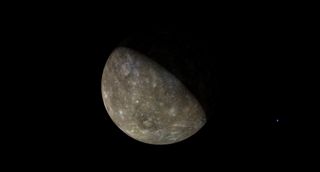
As an evening star, Mercury appears in the western sky setting about an hour after the sun. As a morning star, it appears in the eastern sky rising about an hour before the sun. There must be a clear, unobstructed horizon on these occasions. Mercury usually appears as a bright "star" with a yellowish or ochre hue.
Mercury will be visible in mornings from Jan. 1 to Jan. 15; evenings from March 1 to March 14; mornings from April 3 to May 16; evenings from June 12 to July 22; mornings from Aug. 12 to Aug. 28; evenings from Oct. 4 to Nov. 12; mornings from Nov. 28 to Dec. 25.
Brightest in 2025 (evening): Mercury will be brightest and easiest to spot in the evening sky between March 1 and March 14.
Brightest in 2025 (morning): Mercury will be brightest and easiest to spot in the morning sky between Nov. 28 to Dec. 25.
Venus
Always brilliant and shining with a steady, silvery light, Venus will appear in the western sky at dusk from Jan. 1 to March 15, and in the eastern sky at dawn from April 1 through Nov. 6. From mid-February through early May, it will be visible as a slender crescent in steadily held binoculars and telescopes.
Brightest in 2025 (evening): Venus will be brightest in the evening sky from Jan. 28 through Feb. 27, reaching its greatest brilliancy on Feb. 14.
Brightest in 2025 (morning): Venus will be brightest in the morning sky from April 13 through May 12, reaching its greatest brilliancy on April 27.
On the morning of Aug. 12, Venus will pass less than one degree south of Jupiter; the two planets making for a striking sight with the fainter Jupiter sitting less than a degree to the upper left of the dazzling Venus low in the east-northeast sky in the brightening dawn sky.
Venus will pass to the north of the much-fainter bluish star Regulus (in Leo, the Lion) on the morning of Sept. 19; the planet and star will appear low in the east-northeast predawn sky, separated by just over a half a degree. Adding to this display will be a lovely crescent moon just above Venus, creating a pleasing celestial tableau.
Mars
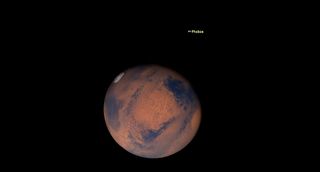
Mars shines like a star with a yellowish-orange hue, and can vary considerably in brightness. Mornings from Jan. 1 to Jan. 14; evenings from Jan. 15 to Nov. 12. Mars begins the year as a brilliant object in the dim zodiacal constellation of Cancer the Crab.
Brightest in 2025: Jan. 10 to 19. It will be closest to Earth on Jan. 12 at 8:37 a.m. Eastern Time at a distance of 59.7 million miles (96.1 million km). Since Mars can come as close as 34.6 million miles (55.7 million km) to Earth as was the case in 2003, this year is not a particularly close encounter.
Three days later, Mars arrives at opposition to the sun: rising at sunset, peaking high in the south at midnight and setting at sunup. It will also be shining at its brightest for 2025 at magnitude -1.4; just a trifle dimmer than Sirius, the brightest star in the sky. On January 13, an occultation/eclipse of Mars by the full moon will be visible across North America.
Other close encounters with the moon occur on Feb. 9 and June 30. In the weeks and months that follow, Mars will become a fixture in the evening sky, but will recede from the Earth and consequently will get progressively fainter. When it finally fades into the evening twilight glow of early November, it will be 225 million miles (362 million km) from Earth and just 1/13 as bright as it was in mid-January.
On June 17, Mars passes only 0.75-degree north of the bluish star Regulus, brightest star of the zodiacal constellation of Leo the Lion. The planet and star will be at almost equal brightness and their color contrast will be striking.
Jupiter
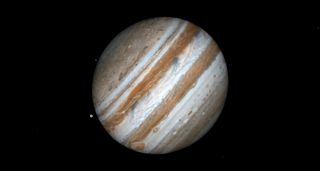
Jupiter will be quite brilliant with a silver-white luster during evenings from Jan. 1 to June 3 and mornings from July 16 to Dec. 31. Jupiter will not come to opposition during 2025; opposition in 2026 will be on Jan. 10.
Brightest in 2025 from Dec. 26 to 31. During this interval, Jupiter will shine like a dazzling silvery "star" of magnitude -2.7 located in the zodiacal constellation of Gemini the Twins. On the morning of Aug. 12, Jupiter will be situated less than one degree north of Venus.
Saturn
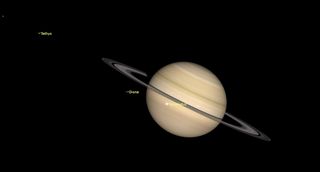
Saturn shines like a yellowish-white "star" of moderate brightness. The planet's famous rings are only visible in a telescope, and they will turn edge-on towards our perspective from Earth on March 23. For several weeks they will be all but impossible to see even in the biggest of telescopes.
Saturn starts 2025 within the boundaries of Aquarius, the Water Carrier, where it will remain for the rest of the year. Evenings from Jan. 1 to Feb. 23; Mornings from March 30 to Sept. 20; evenings again from Sept. 21 to Dec. 31.
Brightest in 2025: Sept. 14 to 25. Saturn is at opposition to the sun on Sept. 21.
Uranus

Uranus can be glimpsed as a naked-eye object by people who are blessed with good eyesight and a clear, dark sky, as well as a forehand knowledge of exactly where to look for it. At its brightest it shines at magnitude +5.6 and can be readily identified with good binoculars.
A small telescope may reveal its tiny, greenish disk. Uranus begins 2025 in the constellation of Aries the Ram and remains there until March 4 when it moves into Taurus the Bull where it will remain for the balance of the year. Evenings from Jan. 1 to May 2; mornings from June 5 to Nov. 20; evenings again from Nov. 21 to Dec. 31.
Brightest in 2025: Oct. 20 to Dec. 26. Uranus will arrive at opposition to the sun on Nov. 21.
Neptune
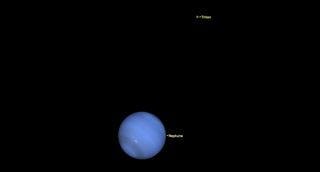
Neptune spends all of 2025 in the constellation of Pisces, the Fishes. At a peak magnitude of +7.8, this bluish-hued world is only visible with good binoculars or a telescope.
Neptune will be visible evenings from Jan. 1 through March 4; mornings from April 6 through Sept. 22; evenings again from Sept. 23 to Dec. 31.
Brightest in 2025: July 26 to Nov. 22. Opposition is on Sept. 23.
Joe Rao serves as an instructor and guest lecturer at New York's Hayden Planetarium. He writes about astronomy for Natural History magazine, the Farmers' Almanac and other publications.
.png)
 2 weeks ago
12
2 weeks ago
12


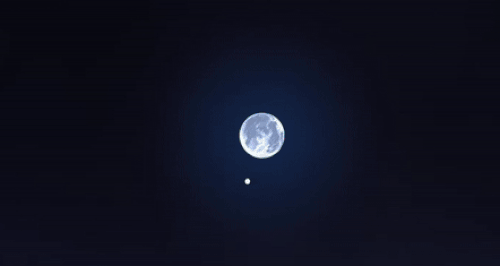



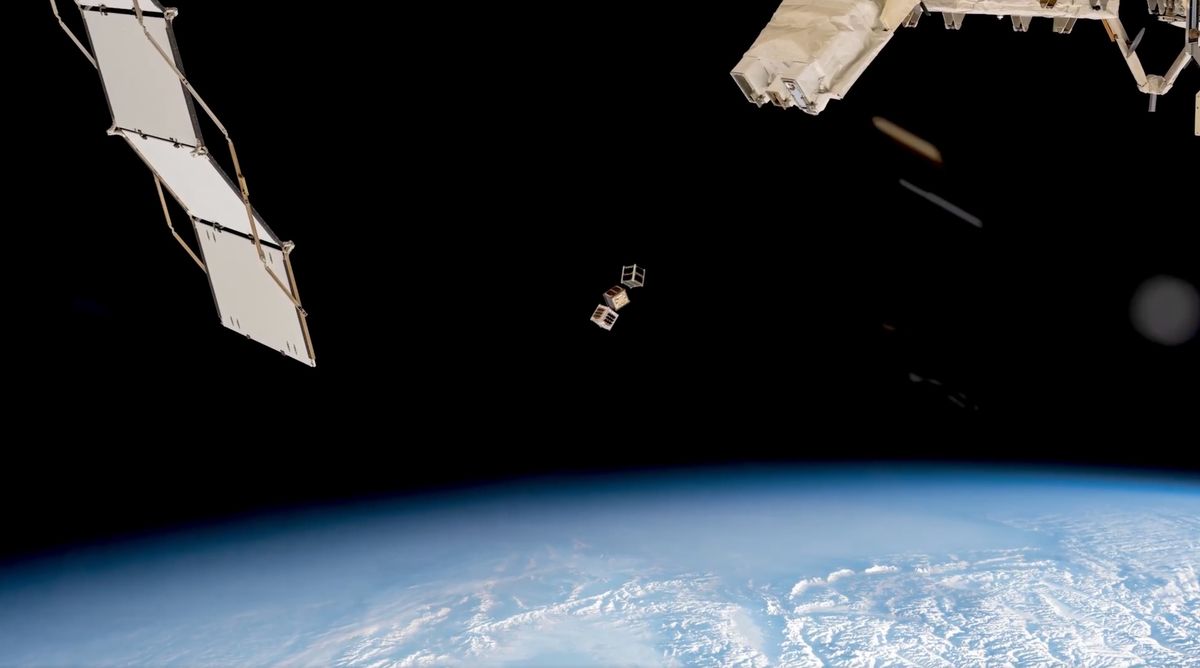
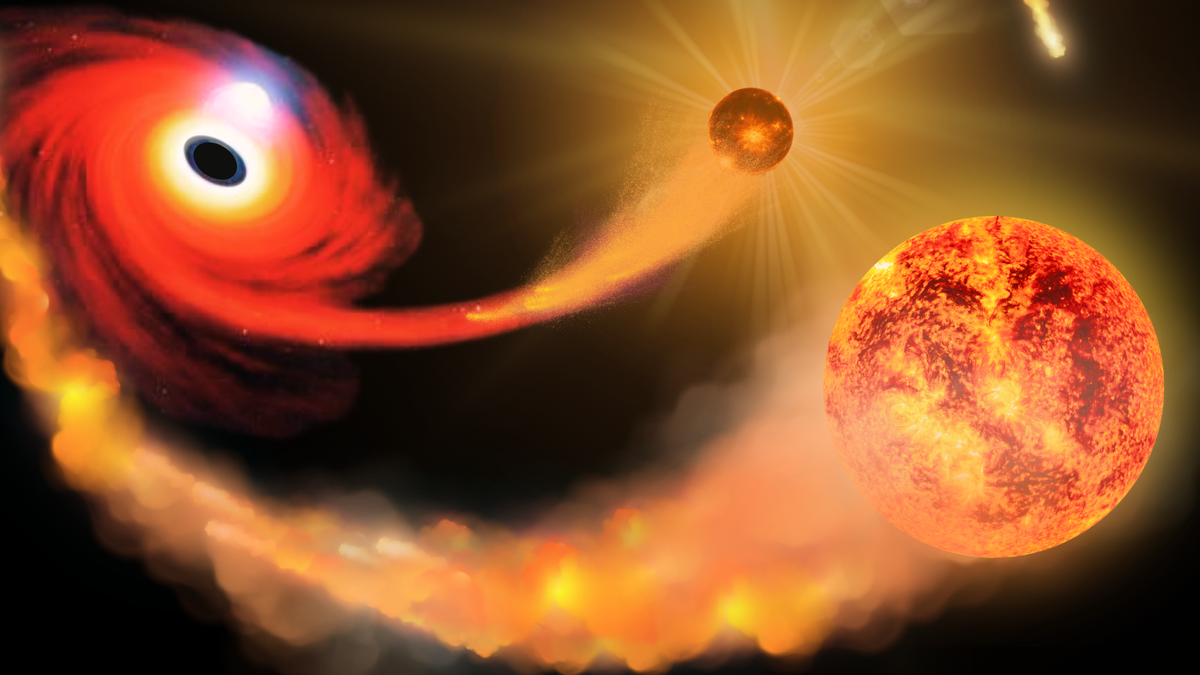


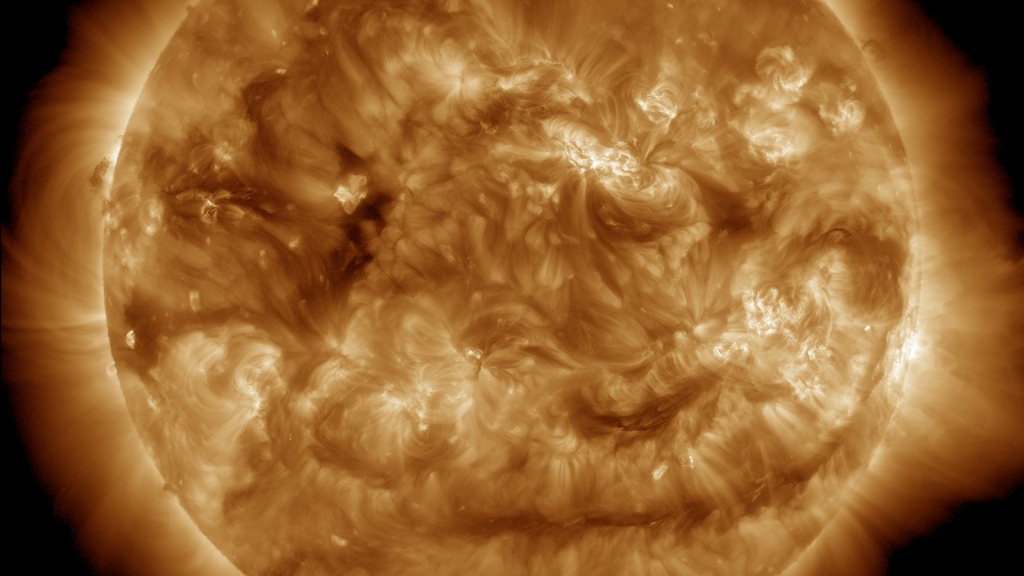























 Bengali (BD) ·
Bengali (BD) ·  English (US) ·
English (US) ·